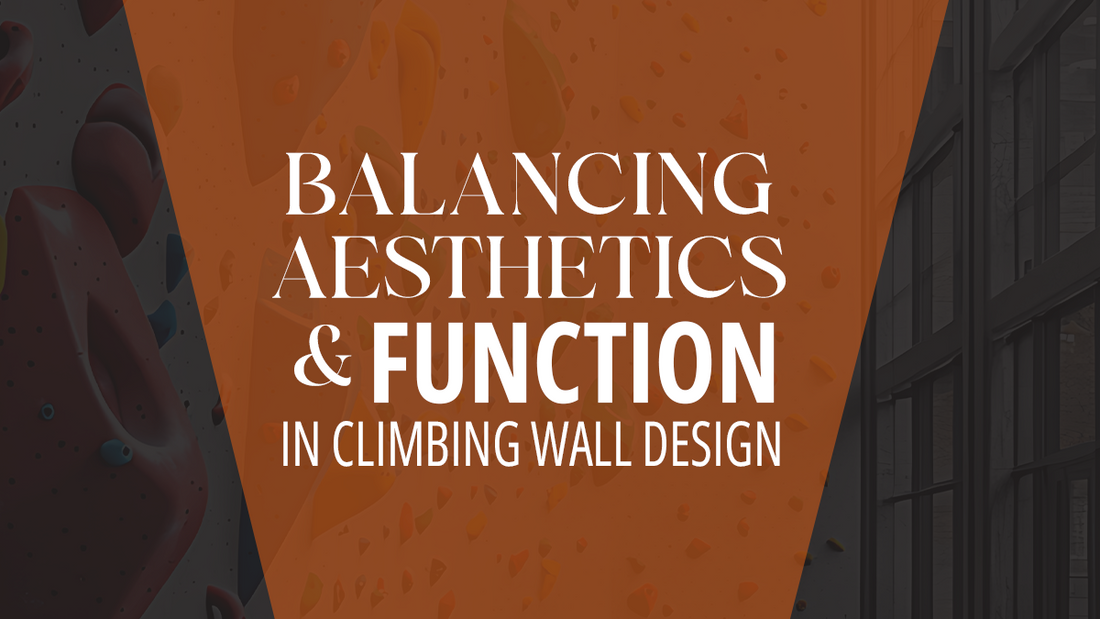
Balancing Aesthetics & Function in Climbing Wall Design
Share
Beyond Training Grounds
Climbing gyms today are more than training grounds—they are lifestyle spaces, social hubs, and architectural statements. As the sport grows, so does the demand for walls that perform well and look exceptional. This article explores how climbing wall design can strike a balance between aesthetics and function and how Elevate Climbing Walls helps gym owners achieve both.
The New Role of Climbing Gyms
Gone are the days when gyms were just plywood and holds. Modern climbing gyms are designed to:
- Impress first-time visitors
- Encourage memberships and repeat visits
- Provide diverse and evolving challenges
- Blend into multi-use spaces like fitness centers or cafes

Defining Aesthetic Appeal
Visual impact is critical. Some of the most Instagrammable gyms gained popularity not just from their climbing but from their style. Aesthetic elements include:
- Wall Geometry: Bold shapes, sweeping arcs, asymmetrical features
- Color Palettes: Unified tones that match brand identity or evoke natural themes
- Material Finish: Textured paint, wood veneers, or sculpted panels
- Lighting Design: Accent lighting that highlights contours or changes mood by zone
Function: The Backbone of Good Design
Form must follow function. A visually striking wall is useless if it doesn’t climb well. Functional design requires:
- Ergonomic Angles: Routes that promote healthy movement patterns
- Surface Texture: Enough friction without tearing skin
- Bolt Placements: Flexibility for route setters
- Durability: Materials that withstand chalk, foot traffic, and constant route resets
Where Aesthetics and Function Intersect
Some of the best designs happen at the intersection of form and function:
- Integrated Volumes: Visually dynamic and setter-friendly
- Custom Color Holds: Match the wall but still pop for visibility
- Architectural Consistency: Walls that match the building’s design language
- Environmental Branding: Logos or graphics painted or embedded into wall features
The Psychology of Design
People are drawn to beautiful spaces. A clean, modern climbing gym can:
- Increase dwell time
- Encourage social media sharing
- Influence how new climbers perceive the difficulty or approachability of the space
Design affects user confidence and mood directly correlates to engagement and retention.
Elevate’s Approach to Aesthetic-Functional Balance
Elevate Climbing Walls approaches design as both a sport science and an art form. Our key principles include:
- Collaborative Planning: We work with architects, brand managers, and gym owners.
- Custom Materials: Materials from raw wood to high-tech textures are selected for look and longevity.
- Visual Storytelling: We help gyms tell their unique story through wall design.
- Setter-Focused Design: Beautiful walls only work if setters can use them effectively. We ensure flexibility and ease of setting.
Common Pitfalls to Avoid
- Overdesigning: Walls that are too busy or complex become hard to set.
- Underestimating Maintenance: Some finishes require more upkeep than others.
- Ignoring Acoustics: Aesthetic materials that echo can ruin the ambiance.
- Mismatched Themes: Walls that clash with the rest of the facility feel out of place.
Designing Climbing Gyms for Modern Lifestyles
Balancing aesthetics and function isn’t just a nice-to-have—it’s essential. A climbing gym’s success hinges on how well it performs and how it feels. At Elevate Climbing Walls, we believe your space should inspire at first glance and impress with every climb. Because when design is done right, it doesn’t just look good—it climbs great.
